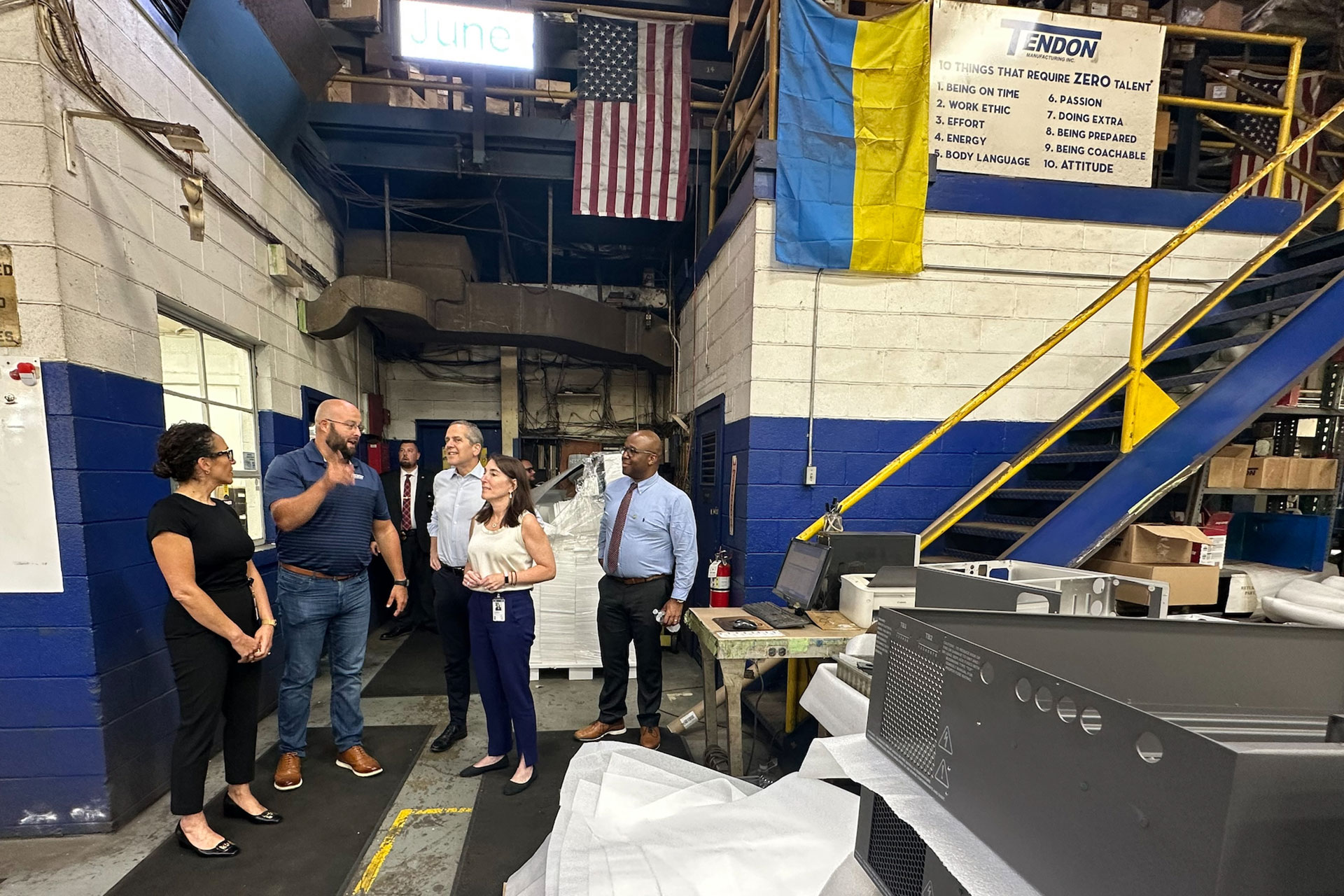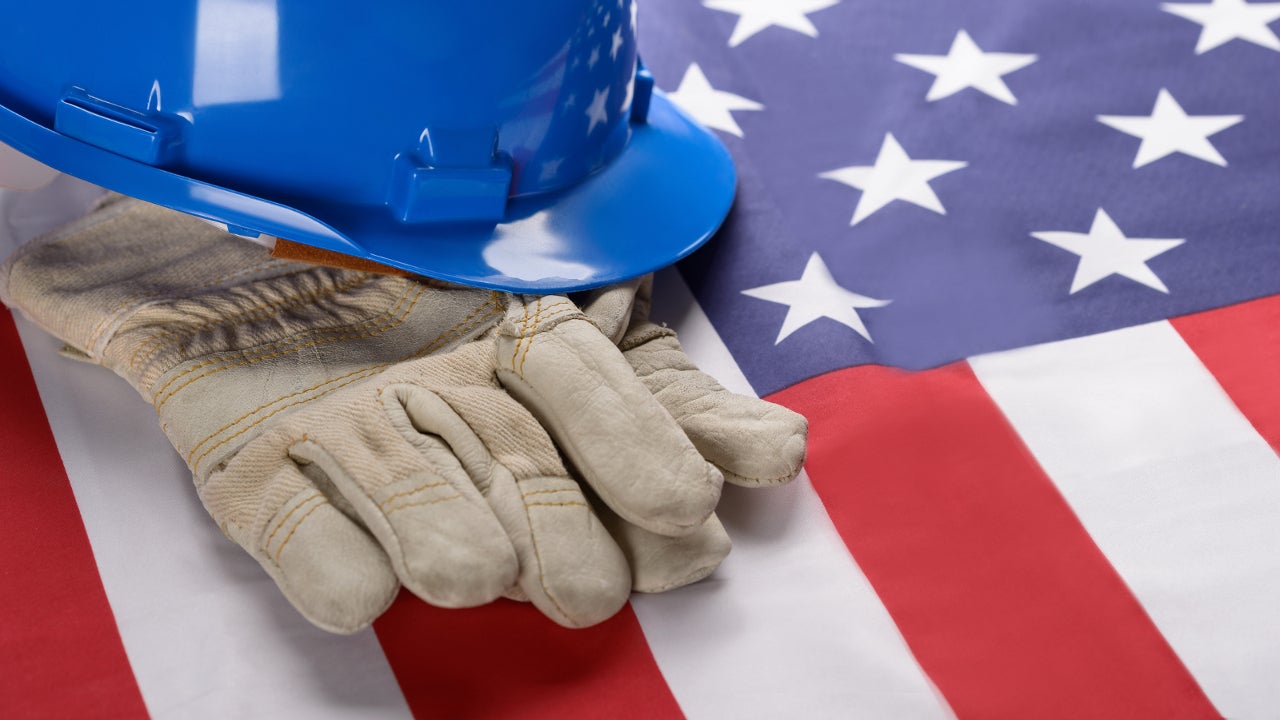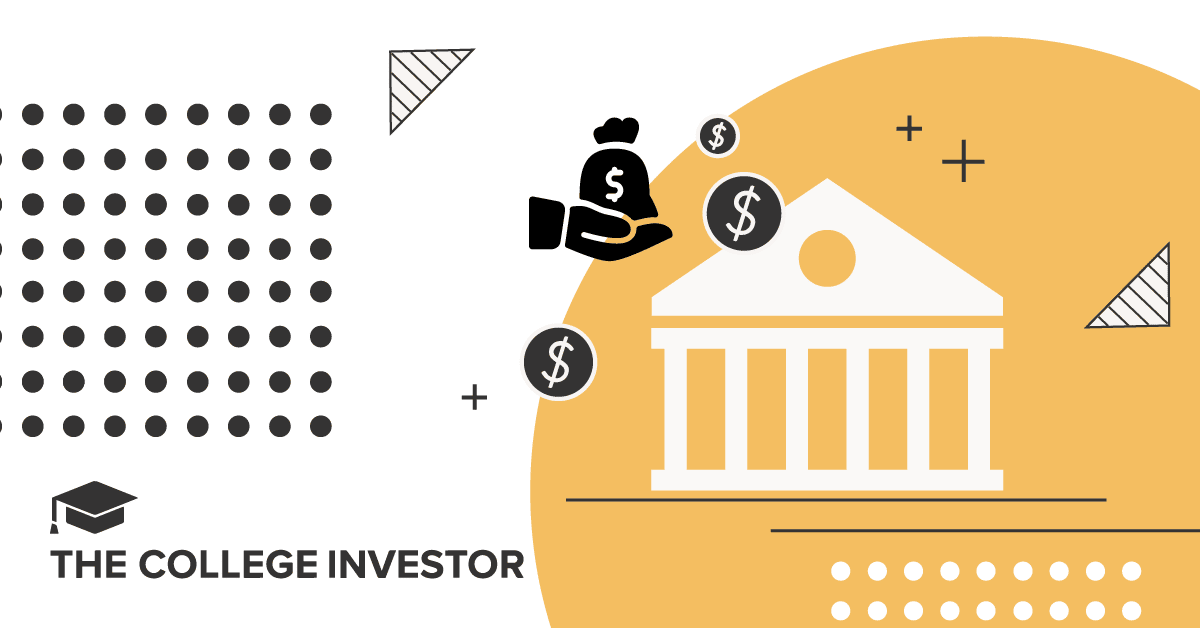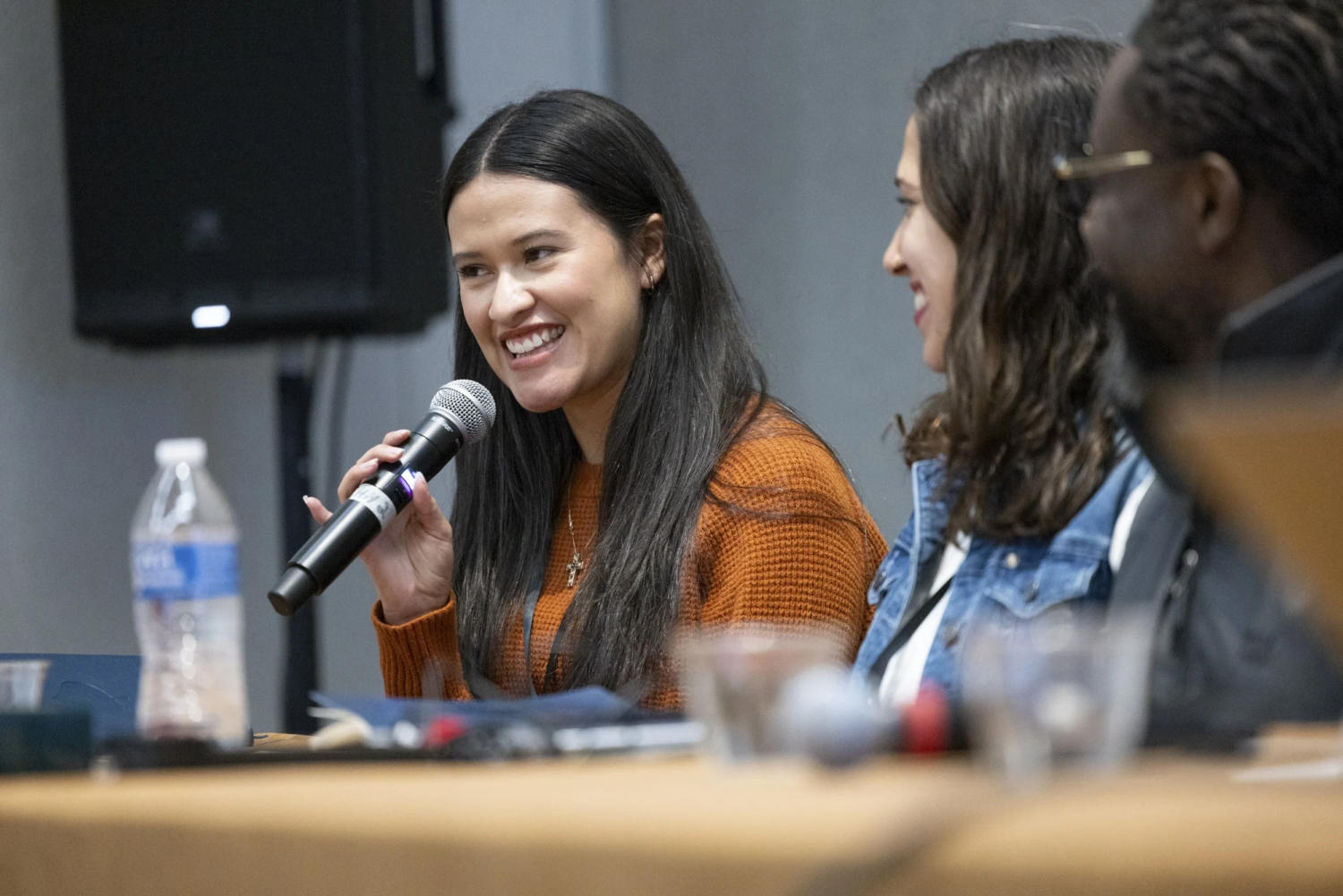Why community conversations matter in monetary policy

Saturday, December 27, 2025

Last year, I was privileged to be selected as the president of the Cleveland Fed. I was excited to take what I had learned from a career in business and from serving on several policy advisory committees to share my unique perspective on monetary policy. The transition has been huge— moving to a new city, making connections with people throughout the region, and deepening my knowledge about how the Federal Reserve works to support a healthy economy.
I knew taking on this role would involve engaging with community stakeholders to learn more about how the economy is working for people in the Fourth District. I also recognized that these regional discussions would play an important role in informing policymaking decisions with my colleagues across the Federal Reserve System. What I didn’t fully appreciate at first was that this would be one of the most enjoyable, insightful, and impactful parts of my job.
The Fed is probably most well-known for conducting monetary policy. This includes setting short-term interest rates to promote maximum employment and stable prices. But the Fed also promotes financial stability, supervises and regulates financial institutions, supports the US payments system, and fosters consumer protection and community development.
When it comes to fostering consumer protection and community development, I’ve learned a lot from Fed colleagues and community stakeholders who serve lower-income communities. I’ve witnessed how using data, conducting outreach, and convening stakeholders to brainstorm solutions to common problems are critical to supporting a healthy economy that works for all.
Data on their own get us only part of the way. Official statistics don’t always tell the full story. Listening to community members is the other crucial element for me as a policymaker. Conversations with workers, employers, and nonprofit professionals help me better understand economic barriers that low- to moderate-income communities face. For example, I heard directly from a single working mother about the struggle to find affordable and quality daycare. This conversation helped me put the Fed’s maximum employment goal into perspective.
During a recent community roundtable in Cincinnati, Ohio, I heard stories about some of the tradeoffs that people are making to help their wages go further. Some households are grappling with how to stretch their budgets to pay for basic needs such as housing, transportation, and groceries. These tradeoffs can include substituting staples like ground beef for cheaper items like hot dogs. A participant at that Cincinnati roundtable put it vividly: “We used to be able to put $50 to the side, but now that $50 looks like $30,” she said.
I recognize that my decisions as a policymaker can have significant consequences for those who may be living paycheck to paycheck. This responsibility further reinforces the importance of the Fed’s community development work and learning from members in the community about their experiences.
Over the past year, my team and I have been intentional in talking to people throughout the region. I have visited more than 20 communities across the Cleveland Fed’s Fourth District, which includes Ohio and parts of Pennsylvania, West Virginia, and Kentucky. I spent time with manufacturing workers in Toledo, Ohio, to hear about workforce training programs that are vital to their ability to advance their careers in the solar panel industry. I toured a horse park with community leaders in Lexington, Kentucky, to learn more about the equine industry’s economic importance to the region and need for workers to support it.
I’ve also talked to people developing nuclear-reactor technology outside of Pittsburgh, Pennsylvania and small business owners in Wooster, Ohio. From nonprofit professionals in Wheeling, West Virgina, who are trying to help clients find affordable child care to small-business owners in Dayton, Ohio, navigating price increases, I’ve heard about successes and concerns. I will not forget the manufacturing workers in northeast Ohio who told me their emergency savings funds aren’t going as far as they used to.
I’ve learned from these interactions that creativity and innovation can drive solutions to common and pressing problems. For example, last year, I visited the Greater Cleveland Food Bank, which provides food assistance to residents. Food bank leaders recognized that many of their clients had multiple social service needs in addition to food insecurity.
The food bank worked with other community service providers in the region to create a Community Resource Center, a one-stop shop where clients can access a variety of services including healthcare, employment, and housing assistance. Similar programs have been created by the nonprofit Brighton Center in northern Kentucky. This wraparound approach aims to reduce barriers to people’s participation in the labor force. As part of our work to fulfill Congress’s dual mandate, it’s important for the Fed to understand any potential roadblocks that may interfere with people’s getting and keeping jobs.
The Fed brings together leaders from community-based organizations, nonprofits, foundations, academia, and other institutions to learn in real-time about economic conditions in low- to moderate-income communities. We also facilitate solutions to these challenges.
For example, gathering information from community and business advisory councils is one way that I and my regional reserve bank president colleagues benefit from multiple perspectives in our regions before we make monetary policy decisions. These discussions are particularly helpful as we aim to be forward looking in setting policy. Often conversations highlight the emerging stories behind numbers that will soon show up in the hard data.
The Policy Summit, which is hosted every other year by the Cleveland Fed, is a case study in our power of convening. It brings together more than 500 community development experts and leaders from across the country to discuss common challenges and potential solutions.
During the summit, Federal Reserve leaders invited attendees to talk about how inflation and labor market conditions are affecting people’s lives. The discussion was part of our Federal Reserve’s Fed Listens initiative. This System-wide effort involves engaging with a variety of organizations to learn more about how monetary policy is impacting people’s livelihoods.
Attendees shared their perspectives about the labor market, and how households, businesses, and communities are responding to higher prices of important items. There was candid feedback about the frustrations that communities feel about economic challenges like inflation and finding jobs in an increasingly digital environment.
What we hear from communities can be used for research to develop tools and to provide resources. Federal Reserve Banks across the country collect insights from community leaders and workforce professionals who serve low- to moderate-income communities and share them in the “Federal Reserve’s Beige Book“. This information is included as a collection of stories about economic conditions throughout the Federal Reserve’s 12 Districts. It is published eight times a year. These timely anecdotal stories can help explain the “why” of what is happening in local economies. This brings a personal lens to monetary policy conversations.
Additionally, The Fed consistently heard from employers and community development leaders about how the people they serve are seeking jobs that provide livable wages. These conversations led the Federal Reserve Banks of Cleveland and Philadelphia to create the Occupational Mobility Explorer (OME).
The tool helps users explore career paths and visualize how skills for a certain occupation can transfer to similar but higher-paying jobs in the same geographical area. For example, some educators and employment specialists have used the tool to help students and workers identify higher-paying career paths. I heard about a veteran who was able to swap house cleaning work for a better paying job at a hotel front desk thanks to the OME tool. Recent enhancements to the resource include updated wage data and more region coverage across the United States.
The need for more robust information about credit conditions facing small businesses led the Federal Reserve to develop the Small Business Credit Survey in 2014. Each year, a nationwide team led by the Cleveland Fed collects responses from thousands of small firms (with fewer than 500 employees) across the country to gather in-depth information about their financing and debt needs.
Small businesses are major players in the economy. According to the US Small Business Administration, small businesses employ nearly half of all private-sector workers and in recent decades have produced nearly two-thirds of new jobs. But they often face challenges in accessing credit, which can be crucial in maintaining and growing their businesses. The survey results are used to create reports and data products to inform broader small business research used by policymakers, financial institutions, and businesses themselves.
At our regular Federal Open Market Committee (FOMC) meetings, I listen carefully to what my colleagues on the Fed’s monetary policy body have learned from discussions with their contacts. As a group, we gain input formally and informally. This can look like talking to shoppers at a local retailer or holding focus groups with lower-wage workers and job seekers. Each one of us brings a bit of that flavor of what’s going on in our corner of the economy to our policy discussions.
Learning and listening have turned out to be one of my favorite parts of the job, and certainly one of the most important. Your voice matters. The Fed wants to hear from you. Visit your own Federal Reserve Bank website for more information on how we can work together on an economy that works for all.
Disclaimer: The views expressed here are those of the author and do not necessarily reflect the views of the Federal Reserve Bank of Cleveland, the Federal Reserve System, or Fed Communities.
Beth M. Hammack is the president and chief executive officer of the Federal Reserve Bank of Cleveland. In this role, she participates in the formulation of US monetary policy and oversees 1,100 employees in the Bank’s Cleveland, Cincinnati, and Pittsburgh offices who conduct economic research, supervise banking institutions, and provide payments services to commercial banks and the US government.





Your email address will not be this published. Required fields are News Today.
We hate spam as much as you do
A traditional Individual Retirement Account (IRA) is a way to save money for the future while receiving tax benefits today....

As Gen Z enters young adulthood, we have come to terms with a terrifying fact—our transition to adulthood is completely...

After years of pauses and temporary protections, student loan collections are set to restart in a very real way. Federal...
© 2025 wisewalletwizard.com, All Rights Reserved